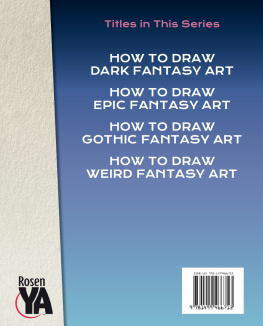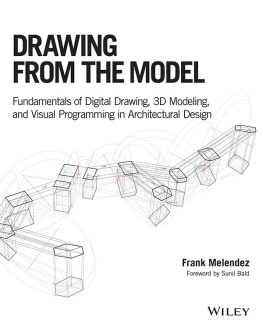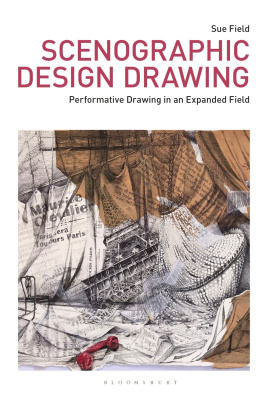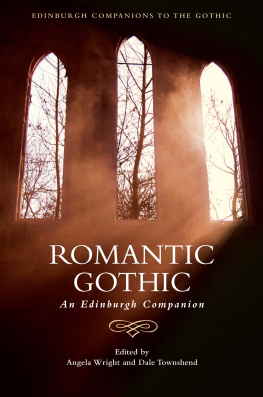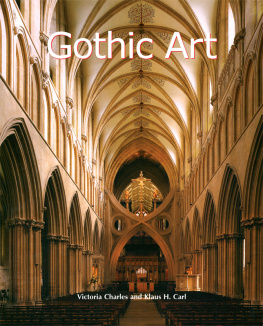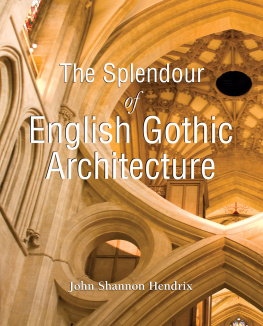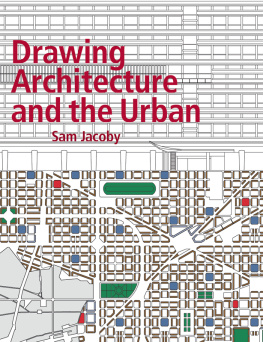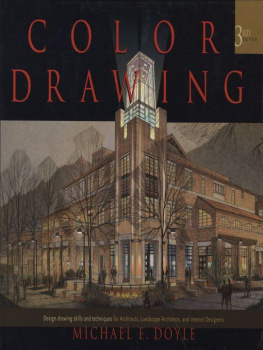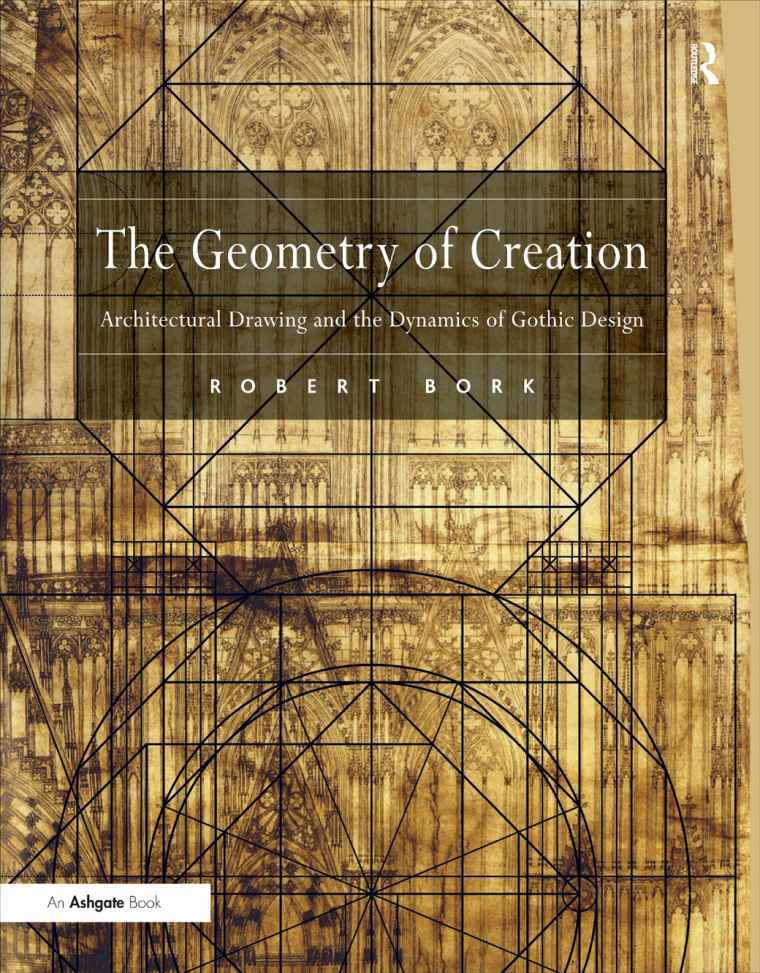THE GEOMETRY OF CREATION
The Geometry of Creation
Architectural Drawing and the Dynamics of Gothic Design
ROBERT BORK

First published 2011 by Ashgate Publishing
Published 2016 by Routledge
2 Park Square, Milton Park, Abingdon, Oxon OX14 4RN
711 Third Avenue, New York, NY 10017, USA
Routledge is an imprint of the Taylor & Francis Group, an informa business
Robert Bork 2011
All rights reserved. No part of this publication may be reproduced, stored in a retrieval system or transmitted in any form or by any means, electronic, mechanical, photocopying, recording or otherwise without the prior permission of the publisher.
Robert Bork has asserted his right under the Copyright, Designs and Patents Act, 1988, to be identified as the author of this work.
Notice:
Product or corporate names may be trademarks or registered trademarks, and are used only for identification and explanation without intent to infringe.
British Library Cataloguing in Publication Data
Bork, Robert Odell, 1967
The Geometry of Creation: Architectural Drawing and the Dynamics of Gothic Design.
1. Architectural drawing, Medieval. 2. Architecture, Gothic Designs and plans. I. Title.
720.28409022dc22
Library of Congress Cataloging-in-Publication Data
Library of Congress Control Number: 2011921241
ISBN 9780754660620 (hbk)
Contents
Unless otherwise noted, all geometrical graphics are by the author. For figures listed without photo source, photo credit belongs to the institution holding the object.
I find it both humbling and gratifying to realize how much support and encouragement I have received over the years as I have pursued my often solipsistic passion for Gothic architectural geometry. In one sense, the long genesis of this project reaches back to my early teenage years, when I began to obsessively draw cathedrals after a visit to Reims with my parents. I went on to develop this interest in college and graduate school under the tutelage of Stephen Gardner, Sergio Sanabria, Virginia Jansen, Robert Mark, and Stephen Murray, all of whom I thank for launching me into my career in architectural history. And in 1998, my first year teaching in the wonderfully supportive art history department at the University of Iowa, I began to explore Gothic geometry more systematically while investigating the choir of Metz Cathedral.
The real beginning of this project dates to the summer of 2001, when I was able to examine and measure Strasbourg Plan B, a drawing that figured prominently in my ongoing study of Gothic spire design. The summer of 2001 proved pivotal also because Norbert Nussbaum kindly invited me to participate in a conference in SchwbischGmnd, where I connected with many of the other scholars whose work has informed and inspired this project, including Hans Bker, Paul Crossley, Peter Kurmann, Pablo de la Riestra, Marc Schurr, and Achim Timmermann. That fall term, under the shadow of the September 11 attacks, I was fortunate to continue working alongside Norbert in Cologne, thanks to a Career Development Award and an International Programs travel grant from the University of Iowa. My primary objective at that point was to complete the manuscript for my first book, Great Spires: Skyscrapers of the New Jerusalem, but it was already becoming apparent that my next major project would involve the geometry of drawings. Already in 2003, therefore, I visited Vienna, where Hans Bker and Monika Knofler thoughtfully facilitated my examination of many drawings from the unrivaled collection of the Kupferstichkabinett at the Akademie der bildenden Knste.
Late in 2004 I was thrilled to receive substantial grant support for my project: a Faculty Scholar Award from the University of Iowa, a Sabbatical Fellowship from the American Philosophical Society, and a Frederick Burkhardt Fellowship from the American Council of Learned Societies. I am profoundly grateful for this institutional largesse, which allowed me to concentrate intensively on my geometrical research in ways that would have been impossible otherwise. I spent the summer of 2005 on a delightful research trip with Achim Timmermann and Jackie Jung, examining Gothic drawings and tracking down specimens of microarchitecture throughout the German-speaking world; during this period I also began to enter into serious discussions about this book project with Ashgate editor John Smedley. I am tremendously grateful to John for being so encouraging and supportive throughout this books long gestation period.
Bolstered by this generous backing, I spent the spring semester of 2006 in Europe, living roughly a month at a time in Cologne, Strasbourg, and Munich, before traveling through Italy and Switzerland. My family and I passed the 20062007 academic year at CASBS, the Center for Advanced Study in the Behavioral Sciences in Stanford, California, an idyllic setting in which I was able to draft roughly half of this book manuscript. For their hospitality in California, I am particularly grateful to Bob Scott and the members of the Sarum Seminar, and to Jennifer Summit and the members of the Stanford University program in Medieval Studies. Before returning to Iowa, I received two more grants that I am happy to acknowledge: a publication subvention from the Samuel H. Kress Foundation, and a fellowship from the Alexander von Humboldt Stiftung that allowed me to spend the summers of 2008, 2009, and 2010 in Cologne, working again alongside Norbert Nussbaum and his students. In the summer of 2010, finally, I welcomed the perceptive feedback on my manuscript from Paul Crossley, whose excellent suggestions Ive done my best to incorporate.
The preceding chronology already hints at the extent to which the production of this book has been made possible by support from a diverse array of individuals and institutions, but many important contributors remain to be acknowledged. Given the nature of this project, I am particularly indebted to the staff members of the many museums that have granted me access to or publication rights for the Gothic drawings in their collections: the Historisches Museum in Bern; the Archives dpartmentales du Puy-de-Dme in Clermont-Ferrand; the Domarchiv and Stadtmuseum in Cologne; the Historisches Museum in Frankfurt; the Mnsterbauverein in Freiburg; the Archives de ltat in Fribourg; the Collection M in Leuven; the Victoria and Albert Museum in London; the Cloisters in New York; the Opera del Duomo in Orvieto; the Bibliothque de lInstitut de France and the Bibliothque nationale de France in Paris; the Dizesanmuseum and Dombauhtte in Regensburg; the Opera della Metropolitana in Siena; the Muse de lOeuvre Notre-Dame and Fondation de lOeuvre Notre-Dame in Strasbourg; the Stadtarchiv, Stadtmuseum, and Dombauhtte in Ulm; and the Dombauhtte, the Wien Museum and the Kupferstichkabinett of the Akademie der bildenden Knste in Vienna.
I am also grateful to many other individuals not yet named above who have made my work on this project more pleasant, more rewarding, and altogether better. If I were to detail their contributions, my list of acknowledgments would grow to rival the length of the book itself. With apologies for the concise format, then, I am pleased to thank the following friends and colleagues: James Ackerman, Valerio Ascani, Carl Barnes, Klara Beneovsk, Christoph Brachmann, Shirley Prager Branner, Bill Clark, Greg Clark, Matthew Cohen, Meredith Cohen, the Colby-Westphal family, Thomas Coomans, Danya Crites, Michael Davis, Ceile Dupeux, Natasha Eaton, Thomas Flum, Christian Freigang, Alexandra Gajewski, Gudrun Gersmann, the Graf-Bicher family, Max Grossman, Klaus Hardering, Ulrike Heckner, Stefan Holzer, Stephan Hoppe, Ann Huppert, Linda Jack, Dick and Ann Jones, Andrea Kann, Thomas DaCosta Kaufmann, Matt Kavaler, Steve Kerrigan, Holger Klein, Hubertus Kohle, Alex Kobe, Astrid Lang, Sabine Lepsky, Kris Luce, Gerhard Lutz, Therese Martin, Abby McGehee, Nico Menndez Gonzlez, Jeff Miller, Maureen Miller, Scott Montgomery, Linda Neagley, Lucie and Rosa Nussbaum, Zo Opa, Jean-Pierre Reeb, Hermann Reidel, Cornelia Reiter, Lucio Riccetti, Stefan Roller, Mary Sarotte, Emily Schaum, Barbara Schock-Werner, Helmut Selzer, John Senseney, Ellen Shortell, Gisbert and Vera Siegert, Charlotte Stanford, Marc Steinmann, Richard Sundt, Arnaud Timbert, Marvin Trachtenberg, Steve Walton, Christopher Wilson, Nancy Wu, and Wolfgang Zehetner. Many of these individuals have contributed valuable ideas and suggestions to this book project, and I freely acknowledge that any errors that may have crept into my text are entirely my responsibility.


